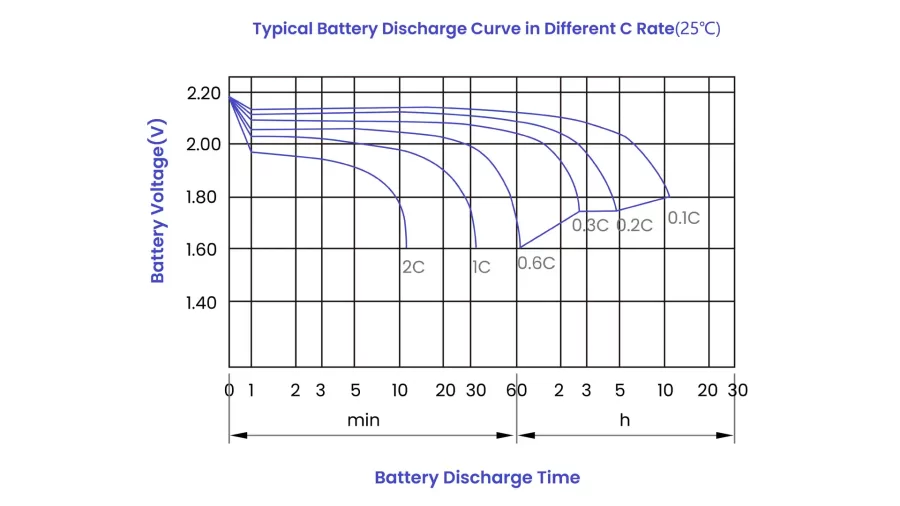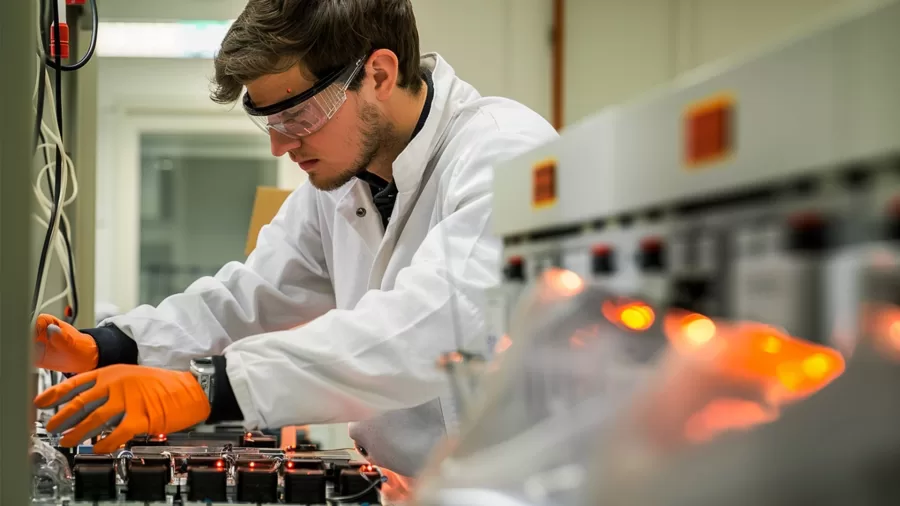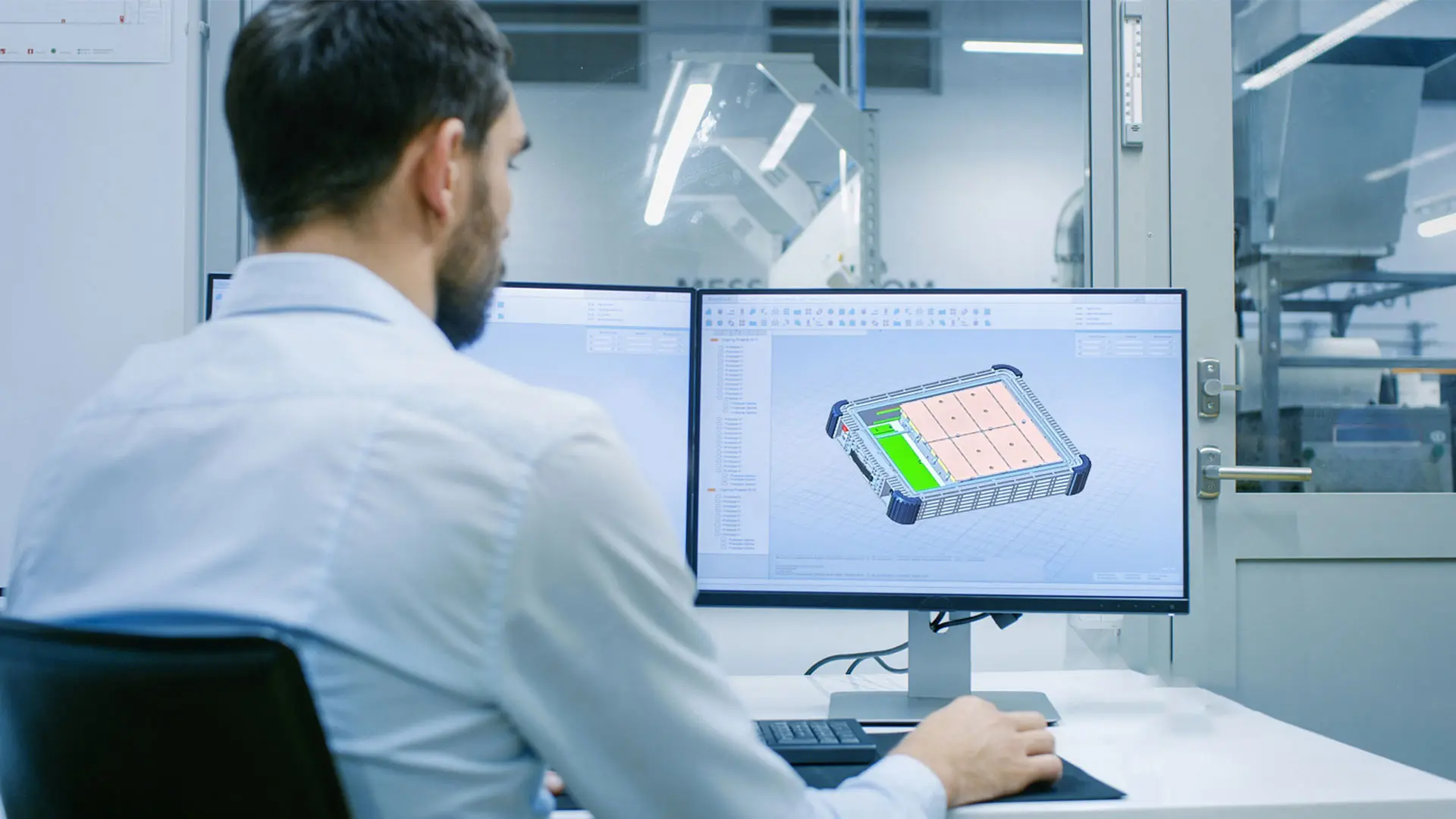In custom battery design, two critical parameters—sizing and the C-rating play a pivotal role. At CM Batteries, we recognize that the C rating of lithium ion battery ensures performance, longevity, and safety, especially for applications with stringent power needs and space limitations. This blog will seek to clarify the concept of the C rating of lithium ion battery and explore its significance in battery pack design from our vantage point as an industry-leading battery pack manufacturer.
Decoding The “C” Rating In Lithium Battery Packs
The “C” rating in battery packs is a crucial parameter in battery technology and design, representing a battery’s discharge relative to its maximum capacity. At CM Batteries, we emphasize that your professional knowledge of the rating will affect the whole battery pack discharge rate, performance, and lifespan.
Battery C Rating Explained
The battery C rating means it can provide a measure of discharge current. For instance, a 1000mAh battery with a 1C rating can discharge at 1000mA for one hour. If the rating is 2C, it can deliver 2000mA for 30 minutes. Grasping the relationship between the C rating and discharge capacity will predict battery life under various loads, which is critical in both portable and stationary applications.
A higher C-rating of a battery indicates it can deliver more power in less time, making it ideal for high-demand devices such as drones, electric vehicles, and power tools. However, this increased power delivery also generates more heat. Effective thermal management is critical, as excessive heat can degrade battery materials, affecting performance and longevity. This is particularly challenging in compact designs where heat dissipation is limited, necessitating advanced thermal management systems.
Frequent high C rate discharges can accelerate battery aging, causing stress on internal components and leading to material breakdown and reduced lifespan. At CM Batteries, we ensure that our battery designs will consider these factors, optimizing for both performance and longevity.
Different applications require different C ratings, and our design process involves choosing the right cell types and configurations to meet specific performance needs. This meticulous approach ensures that each battery pack delivers optimal performance for its intended application.
Safety and reliability are paramount, especially at higher C ratings. At CM Batteries, we integrate multiple safety mechanisms, such as advanced circuit protection and robust cell casings, that make our batteries handle high discharge rates without compromising safety. Our commitment to quality and safety ensures that our battery packs meet the highest standards in the industry.

Are C Ratings Fixed for Specific Battery Cells?
At CM Batteries, we understand the critical role the C rating of lithium ion battery plays in battery selection and pack design. While the inherent properties of a cell – its chemistry, construction, and manufacturer specifications – largely determine its individual C rating, our expertise lies in leveraging this knowledge to craft optimal battery pack solutions.
Each cell we source comes with a manufacturer C rating, indicating the safe maximum discharge rate for maintaining cell health and lifespan. This information forms the foundation for our selection process, ensuring we choose cells that can deliver the power your application demands. It’s a delicate balance – maximizing energy output while safeguarding cell integrity.
However, our capabilities extend beyond individual cells. The magic truly happens in the pack design phase. By strategically configuring multiple cells in series and parallel combinations, we can tailor the overall voltage and capacity of the battery pack.
For instance, consider a parallel cell configuration. This arrangement increases the battery pack’s overall capacity, impacting how the C rating translates to the pack level, even though the individual cell ratings remain unchanged. This flexibility allows us to create custom packs that prioritize high energy density, rapid discharge rates, or a balanced approach depending on your specific needs.
In essence, while the C rating of individual cells is a fixed parameter, CM Batteries’ expertise lies in unlocking the potential within this framework through battery pack design. This adaptability is the cornerstone of our custom battery pack development. Our engineers leverage their in-depth understanding of cell characteristics to optimize performance. We meticulously consider each cell’s C rating and strategically configure them to achieve the optimal balance between power delivery, capacity, and longevity for your unique application.
By partnering with CM Batteries, you gain access to not just high-quality batteries, but also the knowledge and experience to unlock their true potential within a custom-designed battery pack solution.
Delving into Adjustability Of C Rating In Battery Packs
While individual cells may have set C ratings, the beauty lies in the symphonic interplay that occurs when these cells are strategically combined within a battery pack. By meticulously configuring cells in series and parallel combinations, we can orchestrate the overall C rating of the entire system to perfectly match your application’s specific needs.
Imagine a scenario where you require a battery pack with a high discharge rate. Here, our engineers might leverage a parallel cell configuration. This arrangement strategically increases the pack’s total capacity (mAh) while maintaining the original voltage. As a result, the effective C rating of the entire pack decreases, allowing for faster power delivery without compromising on safety or cell health.
Conversely, if your application prioritizes high voltage output, a series cell configuration might be the optimal approach. This setup increases the overall voltage of the pack while keeping the total capacity constant. While the individual cell C ratings remain unchanged, the way the C rating translates to the pack level is affected, enabling the pack to deliver power at a higher voltage level.
This ability to fine-tune the C rating through pack design is a cornerstone of our custom battery development process. Our team possesses an in-depth understanding of cell characteristics and their interplay within a battery pack.

Adhering to Safety Standards: Understanding C Rating Compliance
At CM Batteries, safety is paramount in our battery pack designs, and adhering to C ratings is a critical part of ensuring it. Exceeding the recommended C rating can lead to overheating, diminished performance, and, in severe cases, thermal runaway or fire.
To maintain the highest safety standards, our engineers adhere to several essential guidelines:
- Adhere to Manufacturer-Specified C Ratings: We strictly follow the C ratings specified by the manufacturer to prevent overloading the battery cells and to ensure their longevity and reliability.
- Implement Robust Thermal Management: High C-rated batteries require effective thermal management systems to dissipate heat and maintain safe operating temperatures, especially under demanding conditions.
- Environmental Conditions: The temperature variations can significantly impact battery performance and safety and we design our battery packs to perform optimally across a wide range of environmental conditions.
- Incorporate Protective Circuitry: We integrate advanced protective circuits to prevent over-discharge and to ensure that the discharge rates remain within safe limits, safeguarding the battery from potential damage.
Delving into the Dynamics of C Ratings and Battery Lifespan
The C rating of lithium ion battery can have an impact on its life cycle, which is defined as the number of full charge-discharge cycles a battery can go through before its capacity drops below a particular percentage of its initial capacity. A higher C grade might result in a shorter life cycle. Because rapid discharge rates can strain the battery’s internal chemistry and materials, hastening wear and deterioration. As a result, a compromise must be achieved between the necessary discharge rate and the battery pack’s targeted lifespan.
Our expertise in battery design enables us to carefully evaluate these factors, ensuring that our custom battery pack meets both performance and longevity requirements without compromising safety or reliability.
Summary
At CM Batteries, achieving the desired power output is only part of the equation, and ensuring the reliability, safety, and longevity of the battery pack is equally important. By meticulously evaluating these parameters, our engineers create battery solutions that precisely meet specific requirements while upholding the highest standards of safety and efficiency. This expertise, coupled with ongoing advancements in battery technology, allows us to develop robust, efficient, and safe power solutions for a wide array of applications. Our commitment to excellence ensures that each battery pack we design not only performs optimally but also stands the test of time in demanding environments.












One thought